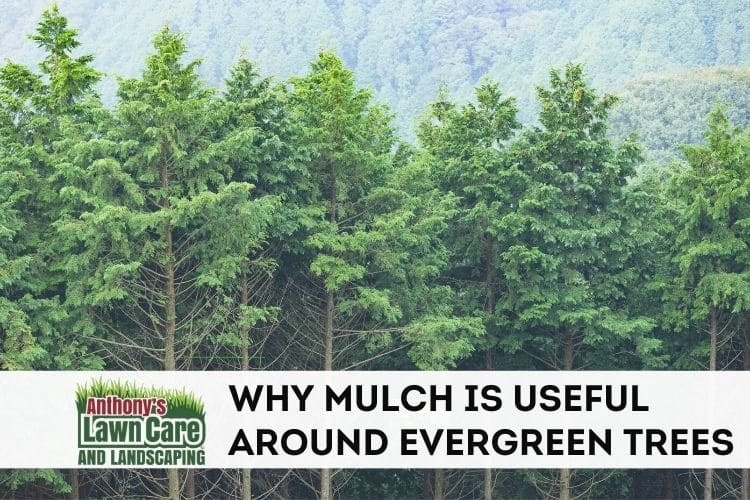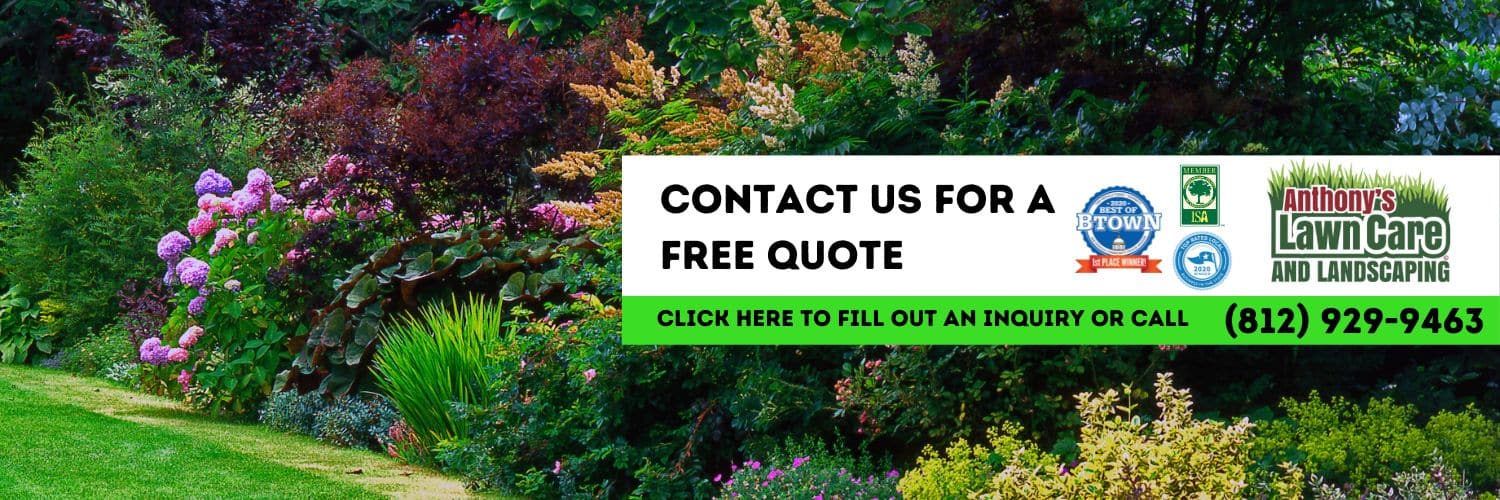Evergreens bring so much life to a property in the winter. When everything else looks dormant and dead, they provide the green that reminds us nature will bloom again soon. This is why, even before “Christmas trees,” people have traditionally brought evergreen trees and garlands from inside.
So keeping them healthy during the winter is key. And towards this goal, you should look at mulch as a primary tool.
Why mulching your evergreens should be a priority
Mulch does a lot for an evergreen that keeps it healthy. During winter, this is especially necessary as water, sun and nutrients are in shorter supply. Here are a few ways mulching helps:
- Maintaining moisture: In the winter, the ground gets cold and hard. A couple inches of mulch can help create a softer place for water to enter into the soil above the root ball. Especially for younger evergreens, a lack of moisture in the winter can be a death sentence, because their root systems have not had a chance to fully develop.
- Holding on to heat: Extreme temperatures can also be hard on a tree, including evergreens. The colder temperatures will not have as much of an effect if the ground around the tree is insulated.
- Preventing weeds: A “weed” is just a way of saying a plant you don’t want to be growing where it is growing. And any plant growing under your evergreen will compete for resources and is therefore an unwanted weed. Mulch prevents other plants from growing directly underneath it by blocking sunlight. Even if a plant does somehow sprout, having two or three inches of mulch will be very difficult to push through.
But be careful… mulching can also harm trees if done improperly
There are some important considerations, though, when you mulch around your tree. Ignoring them can mean the difference between saving your tree and being part of bringing about its demise yourself.
- Don’t mulch too closely: Mulch around the tree, but don’t mulch against the tree. The ring should be a few inches away from the trunk and no mulch should make contact with the tree. If mulch does rest against the tree, you can cause mold and mildew a place to thrive, and they will attack the tree.
- Never make a “mulch volcano”: Along the same lines, it is a common mistake to see people pile up mulch around the base of the tree year after year until there is a big hill of debris all around the trunk. This volcano is now part of the ground, as far as the tree can tell, so its root structure will move into the space. These above ground roots will look bad if the volcano is ever flattened back down, and they weaken the deeper root structures.
- Don’t mulch too deep: If you just keep throwing more and more mulch down every year, you may not know just how deep it’s become. Three inches is probably the deepest you want to go. Any deeper than that and you begin to create a place for rodents, insects, fungus and other potentially harmful lifeforms to thrive.
Mulching evergreens the right way
So it’s vitally important to mulch your evergreens, especially when they’re young, but it can also kill them if done incorrectly. What should a homeowner do then? One thing you can do is contact a local expert who knows exactly what type of mulch to use for that tree, how far away the mulch ring should be from the trunk and how deep to make the mulch layer. In the Bloomington, Indiana, area, that expert is Anthony’s. We can be reached at (812) 345-5694 and can help create a mulching plan for your evergreens.



Recent Comments